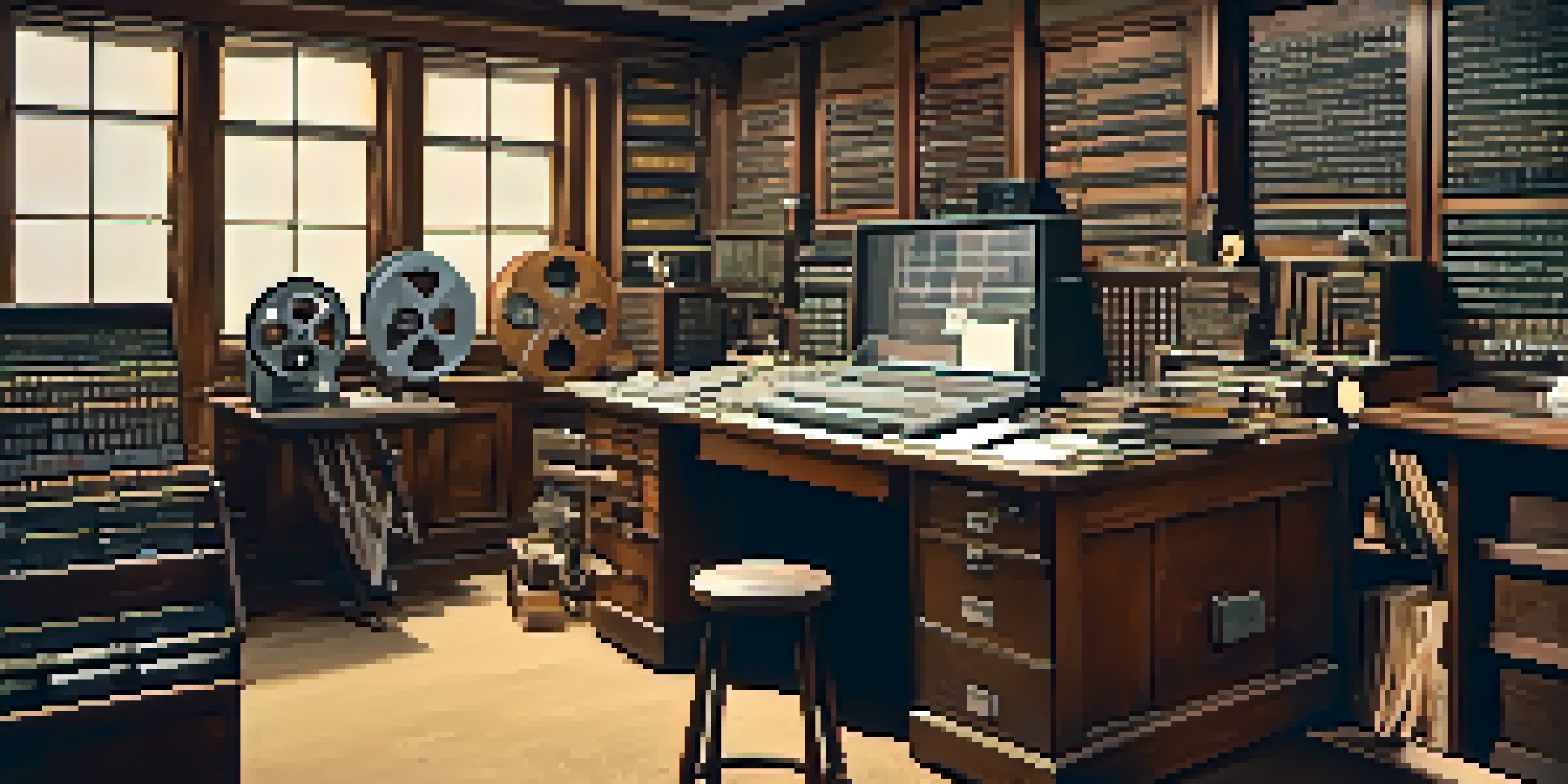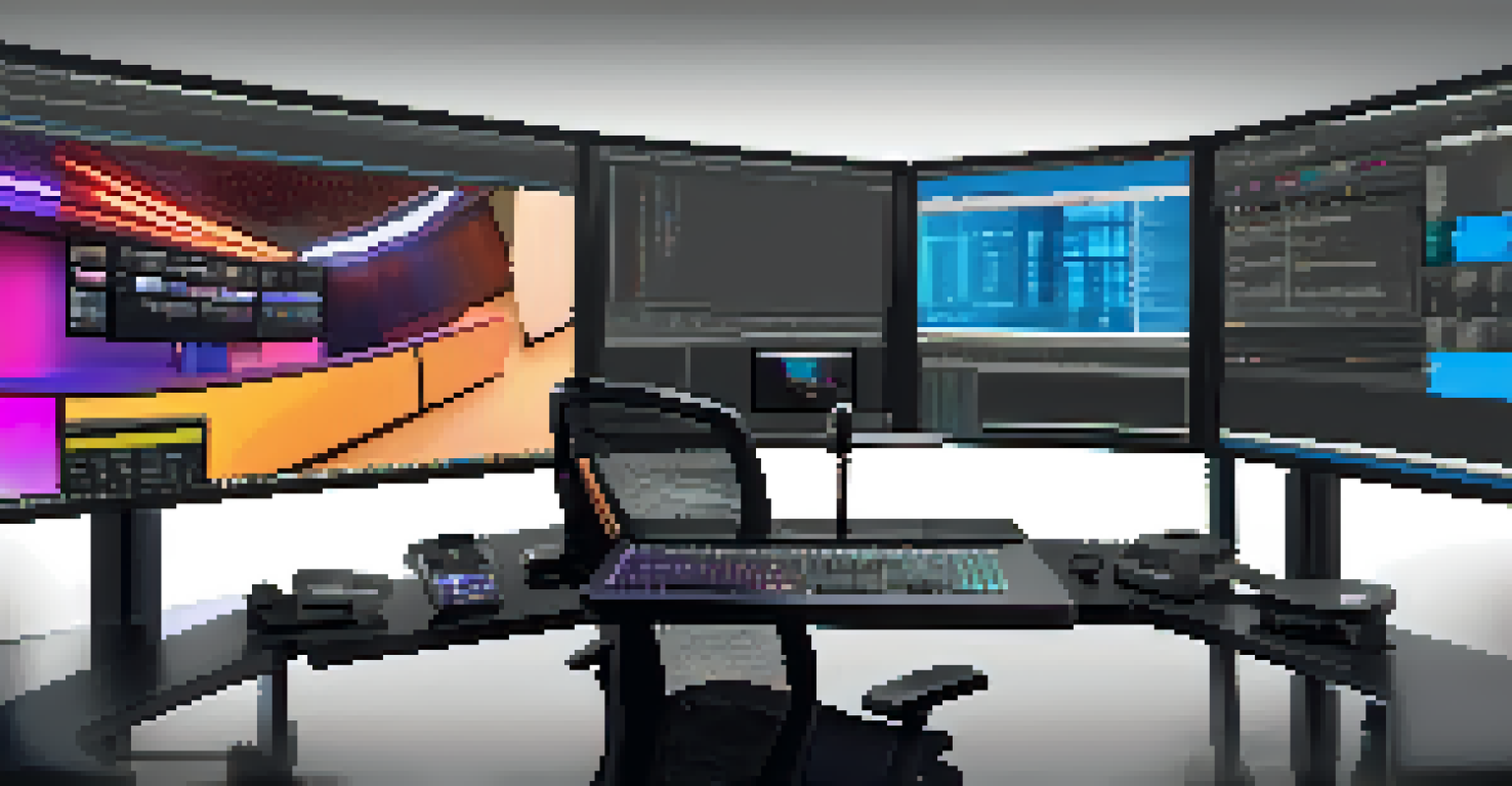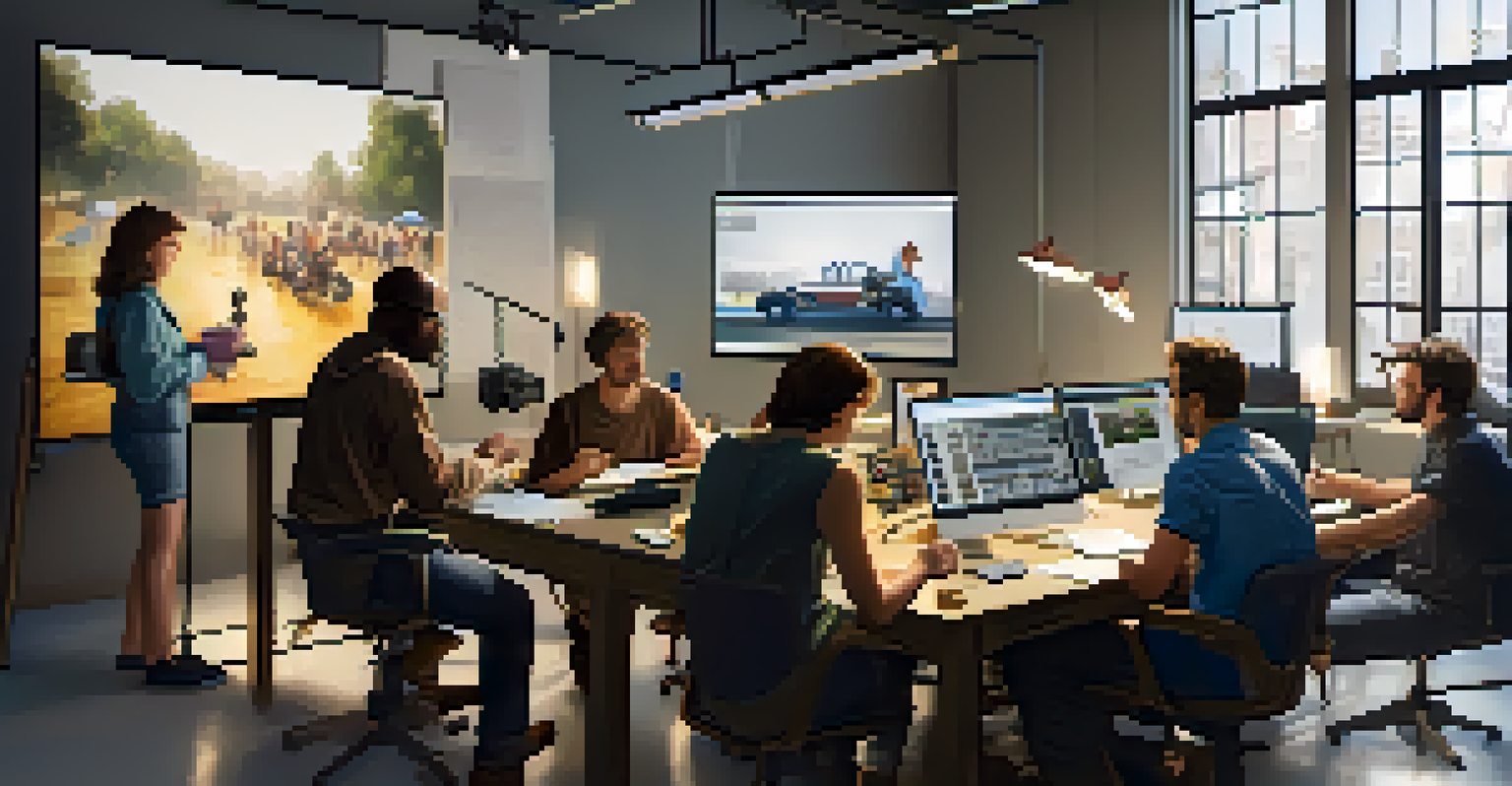Editing Technology: The Evolution of Film Editing Techniques

The Birth of Film Editing: Early Techniques and Innovations
Film editing began in the late 19th century, at a time when filmmakers primarily relied on simple cuts and splices. Early pioneers like Edwin S. Porter utilized these techniques to create compelling narratives, as seen in his groundbreaking film 'The Great Train Robbery'. This film demonstrated the power of editing to shape a story, laying the groundwork for future innovations.
Editing is the process of selecting and preparing written, visual, audible, and film media used to convey information or ideas.
As films evolved, so did the techniques. The introduction of the editing room and the use of film reels allowed editors to experiment with pacing and structure. Techniques like cross-cutting emerged, enabling filmmakers to weave multiple narratives together and create tension in their stories, much like a skilled musician blending different melodies.
The early 20th century marked a significant turning point, as filmmakers began to see editing as an art form rather than just a technical necessity. Influential figures like Sergei Eisenstein showcased how editing could evoke emotions and build suspense, fundamentally changing the way stories were told on screen.
The Rise of Sound and Its Impact on Editing Techniques
The introduction of synchronized sound in the late 1920s revolutionized film editing. With sound, editors faced new challenges, as they had to ensure that audio and visuals worked harmoniously together. This required a more meticulous approach to timing, leading to the development of techniques that would enhance the viewer's experience, much like a conductor guiding an orchestra.

Films like 'The Jazz Singer' showcased the potential of sound, prompting editors to explore creative ways to integrate dialogue and music into their narratives. As a result, the pacing of editing began to change, with editors adapting their techniques to emphasize dialogue delivery and musical cues, creating a more immersive experience.
Editing Evolution Through Technology
Film editing has transformed from simple cuts to sophisticated digital techniques, reflecting advancements in technology and storytelling.
This era also saw the emergence of sound editing as a specialty, further diversifying the role of the editor. As film technology continued to advance, the need for skilled editors who understood both visual and audio elements became more crucial, paving the way for the multifaceted editing professionals we see today.
The Advent of Digital Editing: A Game Changer for Filmmakers
The transition from analog to digital editing in the late 20th century marked a revolutionary shift in the film industry. Digital editing software, such as Avid Media Composer and Adobe Premiere Pro, allowed editors to manipulate footage with unprecedented precision and ease. This shift not only sped up the editing process but also opened up creative possibilities that were previously unimaginable.
The editor's job is to take the raw footage and shape it into a coherent and engaging story.
With digital technology, filmmakers could experiment with visual effects, transitions, and color grading in ways that enhanced storytelling. Editors could now work with non-linear editing systems, allowing them to access any part of the film at any time, similar to flipping through a book to find the perfect passage. This flexibility enabled quicker revisions and more collaborative workflows.
Moreover, the accessibility of digital editing tools democratized filmmaking, empowering independent filmmakers to produce high-quality content without the need for a massive budget. This evolution has led to a surge of diverse voices in cinema, as more creators can share their unique stories with the world, reshaping the landscape of film.
The Role of Editing in the Digital Age: New Techniques and Trends
In the digital age, editing techniques continue to evolve, with a focus on speed and efficiency. Editors now utilize advanced tools like artificial intelligence to automate mundane tasks, allowing them to focus on the creative aspects of storytelling. This shift is akin to having a personal assistant that helps streamline processes, freeing up time for more imaginative pursuits.
Moreover, the rise of social media and streaming platforms has influenced editing styles, leading to shorter, more dynamic cuts to capture viewers' attention quickly. The trend of rapid editing has changed the way stories are told, making them more visually engaging and suitable for fast-paced consumption, much like the bite-sized content we often encounter online.
Collaboration Enhances Editing Process
Successful film editing relies on close collaboration among directors, cinematographers, and sound designers to create a cohesive narrative.
As technology continues to advance, editors are embracing new formats and styles, such as vertical video for mobile platforms. This adaptability showcases the evolving nature of film editing, as professionals strive to meet the demands of a changing audience while maintaining the essence of storytelling.
The Importance of Collaboration in Film Editing
Collaboration is at the heart of successful film editing. Editors work closely with directors, cinematographers, and sound designers to create a cohesive final product. This teamwork is essential, as each person brings their unique perspective and expertise to the table, much like a well-rehearsed ensemble cast putting on a great performance.
During the editing process, open communication and constructive feedback play a critical role. Editors must balance their creative vision with the director's intentions, often revisiting scenes multiple times to find the perfect cut. This iterative process fosters a vibrant creative environment, where ideas can flourish and evolve.
As the industry continues to change, the role of the editor as a collaborator has become even more pronounced. With the rise of remote collaboration tools, editing teams can now work together seamlessly from different locations, bringing together diverse talents and perspectives to craft compelling stories that resonate with audiences.
Future Trends in Film Editing Technology
As we look ahead, the future of film editing technology is filled with exciting possibilities. Virtual reality (VR) and augmented reality (AR) are beginning to influence editing techniques, allowing for immersive storytelling experiences that engage viewers in new ways. This evolution is reminiscent of how the invention of color film transformed visual narratives, enhancing the emotional connection with audiences.
Additionally, advancements in machine learning are poised to revolutionize the editing process. AI-driven tools can analyze footage and suggest edits, streamlining workflows and allowing editors to focus on storytelling rather than technical tasks. This technology has the potential to make the editing process more efficient, akin to having a highly skilled assistant who anticipates your needs.
Future Trends in Editing Techniques
Emerging technologies like VR and AI are set to revolutionize film editing, offering new storytelling possibilities and enhancing efficiency.
As filmmakers continue to experiment with these emerging technologies, we can expect to see new forms of storytelling that push the boundaries of traditional cinema. The future of film editing promises to be as dynamic and innovative as the stories it seeks to tell.
Conclusion: The Ever-Evolving Art of Film Editing
The evolution of film editing techniques reflects the broader changes in technology and storytelling throughout history. From the rudimentary cuts of the early 1900s to the sophisticated digital tools of today, editing has transformed into a vital art form that shapes how stories are told. This journey highlights not just the technical advancements, but also the creative spirit that drives filmmakers.
As we embrace the future of film editing, one thing remains clear: the core purpose of editing is to enhance storytelling. Whether through innovative techniques or collaborative efforts, editors continue to play a crucial role in bringing cinematic visions to life. Their ability to weave together visuals, sound, and emotion is what captivates audiences and leaves lasting impressions.

In summary, the evolution of film editing is a testament to the creativity and adaptability of the industry. As technology continues to advance, so too will the techniques that editors use, ensuring that film editing remains a dynamic and essential part of the filmmaking process.